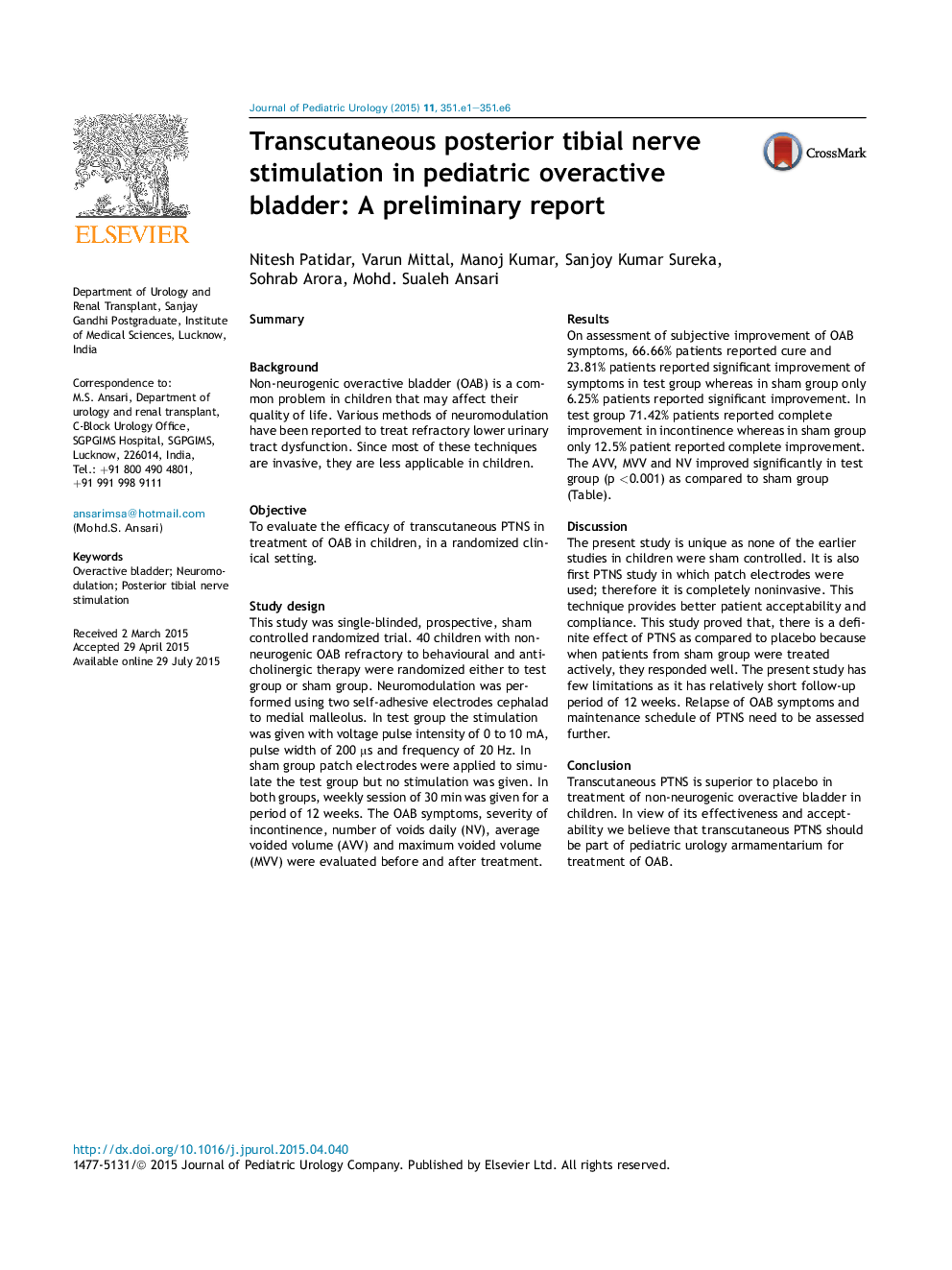| Article ID | Journal | Published Year | Pages | File Type |
|---|---|---|---|---|
| 4161988 | Journal of Pediatric Urology | 2015 | 6 Pages |
Abstract
Transcutaneous PTNS is superior to placebo in treatment of non-neurogenic overactive bladder in children. In view of its effectiveness and acceptability we believe that transcutaneous PTNS should be part of pediatric urology armamentarium for treatment of OAB.Table. Assessment of parameters between groups before and after neuromodulation.GroupInterventionIncontinenceAVV (mL)MVV (mL)NV (no.)NoMildModerateSevereTest NÂ =Â 21Before PTNS07 (33.33%)8 (38%)6 (28.5%)68 (57-103)116 (90-205)11 (10-13)After PTNS15 (71.42%)5 (23.81%)1 (4.76%)089 (69-140)190 (120-300)7 (6-11)Sham NÂ =Â 16Before PTNS05 (31.25%)7 (43.75%)4 (25%)74 (49-98)110 (88-193)10 (9-13)After PTNS2 (12.5%)5 (31.25%)6 (37.5%)3 (18.75%)79.5 (55-100)145.5 (105-200)10 (7-12)Note. PTNSÂ =Â posterior tibial nerve stimulation; AVVÂ =Â average voided volume; MVVÂ =Â maximum voided volume; NVÂ =Â number of voids.
Related Topics
Health Sciences
Medicine and Dentistry
Perinatology, Pediatrics and Child Health
Authors
Nitesh Patidar, Varun Mittal, Manoj Kumar, Sanjoy Kumar Sureka, Sohrab Arora, Mohd. Sualeh Ansari,
